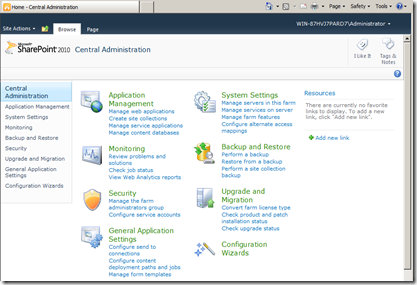In this post of the “Pillars of SharePoint” series, I aim to help you make sense of SharePoint’s Communities feature area. SharePoint is often referred to as the “Facebook for the enterprise” to the dismay of some. The idea of calling it that is to relate the features of SharePoint in terms that people understand by comparing it to a product they may have used already. Facebook is actually a novel concept – even though the application of the concept may leave a little to be desired (courtesy of loose governance controls and the often fallible human nature). Be that as it may, what a great platform for describing yourself, sharing experiences, finding similar interests among acquaintances and reaching out (if you so choose) to encourage those that are in your circle of influence! That may be the most rosy description of Facebook ever! Seems like a good time to relate it to SharePoint…
Microsoft’s product page for SharePoint’s Communities feature touts two things: My Profile and Tags. My Profile is useful for learning about your co-workers, including: “biographies, job titles, location, contact information, interests and skills, and previous projects.” That does not sound so bad, does it? In fact, it sounds very useful to me. In an age where conducting business is plastered in time constraints, travel and a remote workforce, it is important to be as efficient as possible when connecting people, skills and projects. SharePoint has made that a reality. It has essentially combined your company’s employee directory, with your skills inventory and employee resumes. Not to mention that you can receive automatic updates when any of this information changes, such as contact information, job titles and responsibilities. And to answer the obvious question: yes, you can choose which alerts you wish to receive. In fact, your SharePoint administrator can disable alerts that you consider unimportant so that your users cannot subscribe to them. That is an example of SharePoint providing controls to assist in your governance process.
One of my favorite features of SharePoint Server 2010 is the Tags feature. To me it is so valuable to be able to mark a document for future reference, but to be able to share those marked documents with my colleagues and for them to be able to share documents with me is invaluable. This can always be accomplished with email, of course, but tagging is so much more efficient in terms of bandwidth, organization and search. Tagging essentially allows people in the organization to classify documents using words and phrases that are meaningful to them and/or their workgroups, or using predefined words and phrases established by a SharePoint administrator. In addition to tagging, one may comment on documents and other artifacts.
I should also mention that Office Web Applications, which plug right in to SharePoint, give you the ability to perform multi-person, real-time editing of the exact same document! And then there are the long-time Communities features of SharePoint, such as: blogs, wikis, discussion boards, meeting workspaces, slide libraries and so forth. So as you can see, calling SharePoint “Facebook for the enterprise” is underselling it. In my opinion, SharePoint is now the collaborative enterprise standard to which all other similar products will be compared.



